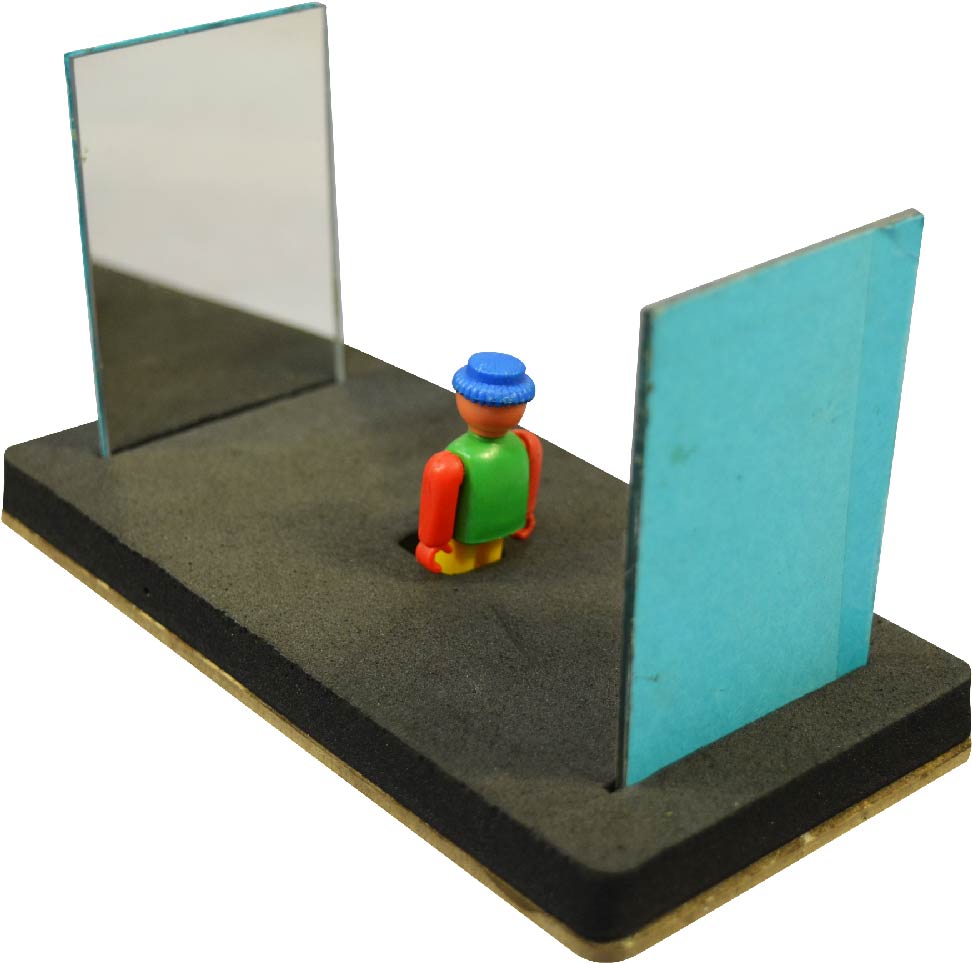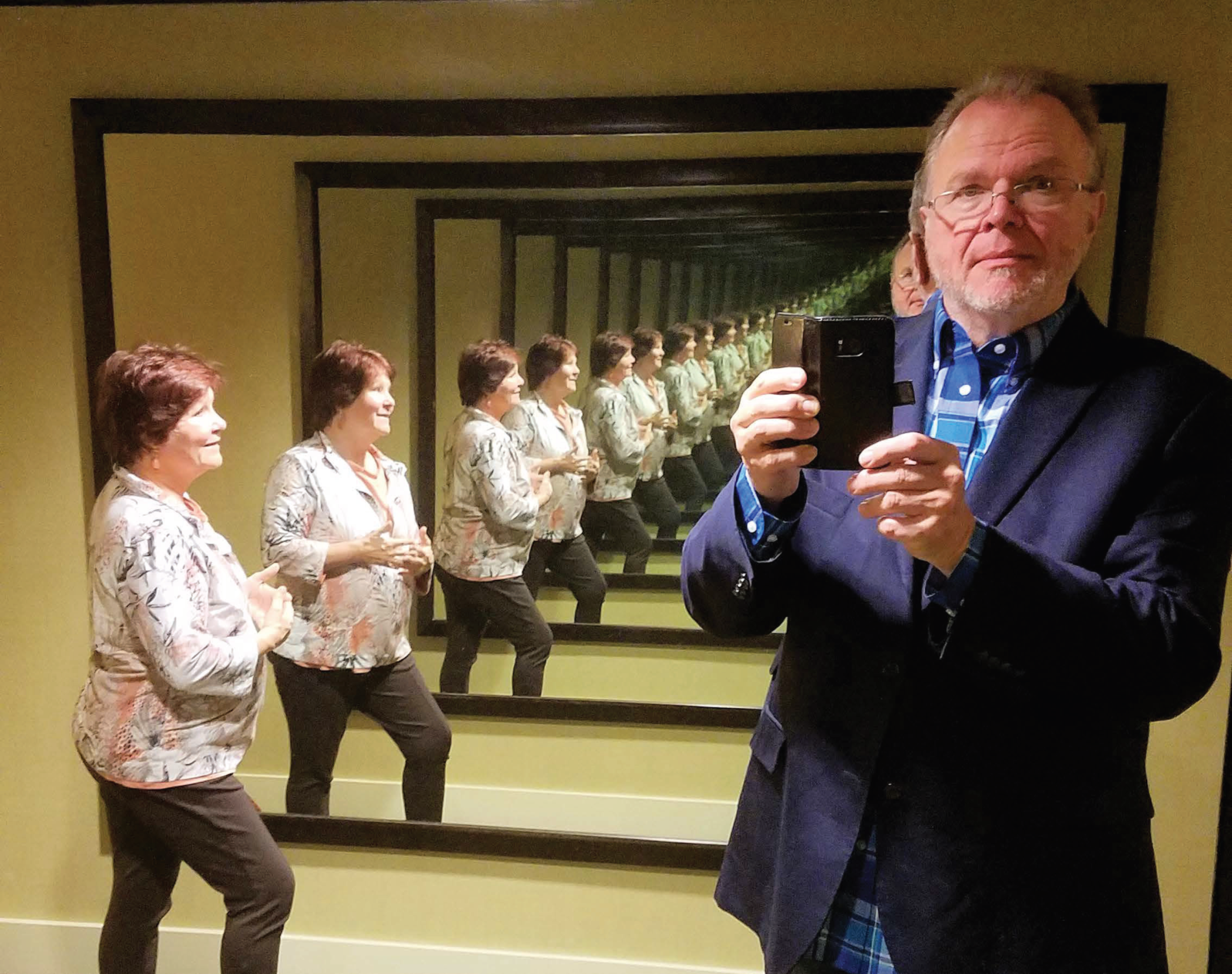The Infinity Mirror Trap: Part 2: The Thought Determinism Paradox
The infinity mirror experience shows that thought determinism cannot explain all human thoughtsIn Part 1 of this series, we saw how the belief that “every human thought is an illusion” proves empty and powerless when trying to account for the infinity mirror experience. Part 2 here puts another view held widely by science-trained people, materialism, to the same mirror test.
Materialism is the view that everything we observe results from the interplay of matter and energy. Under materialism, each human’s every thought is produced by electrochemical events in the brain. As Marvin Minsky, an artificial intelligence pioneer, wrote in Society of Mind (1988), “Everything, including that which happens in our brains, depends on these and only on these: A set of fixed, deterministic laws and a purely random set of accidents.”
Philosopher Daniel C. Dennett said much the same in Brainchildren (1998): “[A] brain was always going to do what it was caused to do by current, local, mechanical circumstances.”
Kenneth R. Miller, the cell biologist who authored The Human Instinct: How We Evolved to Have Reason, Consciousness, and Free Will (2018), considers the idea that every thought is materially determined to be unquestionable: “Let’s assume the obvious … human consciousness is a product of the workings of our nervous system … consciousness is a physiological function like every other human characteristic, a product of [unguided] evolution.”
We can challenge thought determinism in a number of ways, using philosophy and logic. But there also exists a physical way, the infinity mirror experience, which shows that thought determinism cannot explain all human thoughts.
Key to understanding thought determinism is to see that it relies upon the concept of physical causality—the idea that everything we observe is an effect of a physical prior cause. Every phenomenon results from a string of events, i.e., cause-effect physics. In that view, every human thought is the result of cause-effect physics. However, the infinity mirror experience creates an insoluble paradox for thought determinism.
Infinity Mirror Experiment
Set up two mirrors in parallel facing each other, as shown, so that you can easily stand in the middle between them. Look into one of the mirrors, and you see your own reflection. You will also see your reflection repeated into the distance, as the light from that first reflection is reflected back by the mirror behind you. And then that reflected reflection is reflected by the first mirror, back and forth into infinity:

Now consider the photo showing a pretty lady in that middle space between the parallel mirrors. Her image reflects repeatedly into the distance, getting smaller, hazier, and darker, as it recedes. Those effects occur because the mirrors cannot perfectly reflect all of the light each time. The images degrade into a dim, fuzzy haze.

Trace the Cause-Effect Sequence
Consider first the phenomenon of mirror reflection. Look into a mirror. If you see yourself in the mirror, then you have a thought that comes from perceiving the mirror’s reflection. If thought determinism is true, then there must be a cause-effect chain of events leading up to that thought. The thought-determinist must be able to show that cause-effect chain.
Indeed, the thought-determinist faces a universe-sized problem. Thought determinism implies that every present thought traces all the way back to the Big Bang 13.5 billion years ago. There must be cause-effect physics at every step from then until now.
Unfortunately for thought determinism, there is no evident cause-effect chain traceable to last week, yesterday, or even an hour ago. Brain researchers’ tools, such as various electro-encephalographic technologies and the functional MRI, can measure temperatures, pressures, voltages, and the movement of oxygen and tracer elements in the brain. Researchers sometimes correlate an experimental subject’s emotions and perceptions with observable changes in brain electro-chemistry. None of the tools reveals the content of thoughts themselves, however.
Giving the brain research results a huge and unwarranted benefit of the doubt, human thoughts might be indirectly traceable perhaps a few seconds prior to the observed mental event. A few seconds of brain electro-chemistry data, however, offers no support for thought determinism. Such data does not explain why we see ourselves in the mirror. And there is no data showing the cause-effect physics from events outside of the brain that would lead to our mirror experience.
The absence of a cause-effect chain leading to these thoughts means that thought determinism fails as a paradigm.
The Materialist’s Conundrums Multiply
Now let us add the infinity mirror aspects. We show the pretty lady standing between the two mirrors. She perceives her initial reflection but also each successive reflection in the mirrors, stretching out as far as the light permits her to see.
Thought determinism must explain not only her thoughts about her initial reflection. It must also show the cause-effect physics that produces her thoughts about the “infinite” reflections. There must be a sequence of interplays between matter and energy leading to her thoughts as she perceives each successive reflection:
• getting smaller
• getting dimmer
• getting fuzzier
• alternating between “mirror images”
Brain electrochemistry data does not describe actual thoughts; it certainly can’t trace thoughts to origins outside of the brain itself. Yet thought determinism says that every aspect of the pretty lady’s perceptions and thoughts in the infinite mirror results from cause-effect physics that can be traced to yesterday, last week, last year, and ultimately to the Big Bang. Such a causal chain, however, has never been shown to exist.
And then there is the Contradictory Causation Paradox
But wait, there’s more: An utterly insoluble paradox flows from the infinity mirror experiment.
Thought determinism says that every thought is determined by physics and chemistry, so there is a cause-effect sequence explaining every thought in terms of matter and energy (materialism). So far, we have explored the notion that every thought about the infinity mirror experience results from cause-effect physics producing thoughts in the brain.
But thought determinism is just part of the pure materialism worldview. Materialism says that every event, not just in the mind but in the Universe, can trace back to prior physical causes.
That means: The facts that the infinity mirror experiment is set up and the pretty lady is located in it are all facts determined by cause-effect physics. A sequence of cause-effect physics put the lady, the mirrors, the lighting, and everything else, in that place in space-time. But here’s the puzzle:
• Did cause-effect physics create the lady with her life, senses, and mind, and put her there, so that then she could observe the infinity mirror experience?
or
• Did cause-effect physics lead to the lady’s brain believing she was seeing her multiple diminishing reflections in the infinity mirror experiment, when she was not actually physically perceiving anything at all?
Thought determinism cannot decide between these two explanations for the lady’s perceptions. Indeed, materialism has to show the cause-effect physics leading to both (1) placing the lady physically in the mirror experiment, and (2) the lady’s mental perceptions of the infinity mirror experience. Coordinating both (1) and (2), starting at the Big Bang and stretching 13.5 billion years until now, seems above the pay grade of mere matter and energy. Without coordination, however, (1) and (2) can’t help but collide with and contradict one another as explanations for human thoughts.
In the second figure above, the handsome gentleman observes and photographs the same mirror effects as does the lady. For determinism to ensure the gentleman and everyone who views his photos will perceive the same infinite mirror experience makes coordinating all of the events from the Big Bang to the present just that much more complex and fine-tuned, with many more internal contradictions lurking.
Some intelligent, educated people espouse thought determinism, but the infinity mirror experiment shows such determinism lacks physical and logical coherence. Our thoughts are not determined solely by physics nor are they just illusions. As independent thinking and acting beings in a Universe of intelligible natural laws, we can ascertain objective truth and use it to guide our physical and intellectual lives.
Here’s the first part: Why the idea that the human mind is an illusion doesn’t work. There is a simple way to test whether our thoughts are all illusions. A fatal paradox, the infinity mirror, shows that they can’t just be illusions. What causes these experiences?
